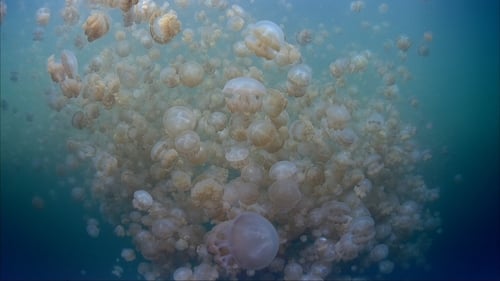
Camera Operator
Three ex-cons join forces to kidnap the son of a very wealthy man for a healthy ransom, but there is one major problem in the equation.

Director of Photography
Commissioned by the Smithsonian's National Museum of Natural History, OCEAN ODYSSEY takes viewers on an undersea journey to remote and magical places. Follow Feodor Pitcairn, a pioneer in underwater HD cinematography, as he explores the marine ecosystems of the Galápagos Islands, Raja Ampat in Indonesia, the Maldives, the Azores, Hawai'i, the Caribbean, the Bahamas, the Channel Islands, British Columbia, the Gulf of Mexico, French Polynesia and Belize. Filmed in high definition, with commentary by Feodor Pitcairn and fellow cinematographer Bob Cranston, OCEAN ODYSSEY is a stunning film that reveals some of the most amazing underwater footage ever seen and offers reflections by two of the most prominent cinematographers at work today.

Commissioned by the Smithsonian's National Museum of Natural History, OCEAN ODYSSEY takes viewers on an undersea journey to remote and magical places. Follow Feodor Pitcairn, a pioneer in underwater HD cinematography, as he explores the marine ecosystems of the Galápagos Islands, Raja Ampat in Indonesia, the Maldives, the Azores, Hawai'i, the Caribbean, the Bahamas, the Channel Islands, British Columbia, the Gulf of Mexico, French Polynesia and Belize. Filmed in high definition, with commentary by Feodor Pitcairn and fellow cinematographer Bob Cranston, OCEAN ODYSSEY is a stunning film that reveals some of the most amazing underwater footage ever seen and offers reflections by two of the most prominent cinematographers at work today.

Director of Photography
A 6-foot-long animatronic shark featuring on-board cameras, Robo Shark is designed to blend in with real sharks and capture never-before-seen wild shark behavior. Footage shown in this television special includes the deep-sea thresher shark in the Philippines; giant whale sharks feeding off the coast of Belize; and deadly hammerheads, great whites and bronze whaler sharks in South Africa.

Assistant Camera
The Living Sea celebrates the beauty and power of the ocean as it explores our relationship with this complex and fragile environment. Using beautiful images of unspoiled healthy waters, The Living Sea offers hope for recovery engendered by productive scientific efforts. Oceanographers studying humpback whales, jellyfish, and deep-sea life show us that the more we understand the ocean and its inhabitants, the more we will know how to protect them. The film also highlights the Central Pacific islands of Palau, one of the most spectacular underwater habitats in the world, to show the beauty and potential of a healthy ocean.

Himself
Cameraman Bob Cranston spends most of his time getting close to our ocean's most dangerous predators and he's noticed something very strange is happening
Off the coast of Baja California (Mexico), great white sharks are congregating in shallow water and they are not feeding on their usual prey of sea lions. And in the frigid waters of the Pacific Northwest, six gills sharks have started hunting in a very shallow 50 feet of water. Strange behaviour. Cranston needs to get close in order to solve the mystery and has specially designed Shark Sonics - a device to attract sharks to his camera. The idea is that instead of chumming the water with fish blood, the Sonic device emits low-frequency waves, like a distressed fish, to attract the sharks. The big benefit is that you can then turn it off to study the sharks as they then calm down and stop thinking about food! Follow Cranston’s journey as he gets up close and free-dives among them without a cage!





